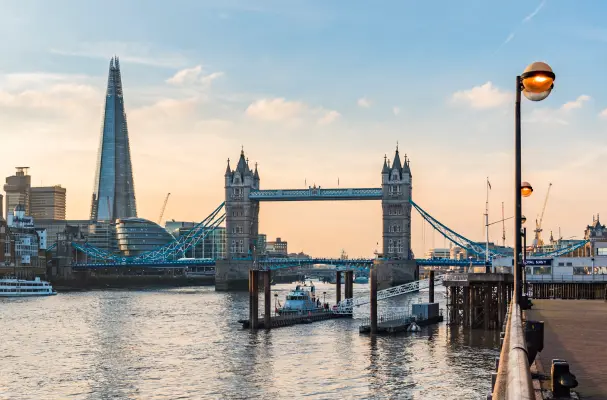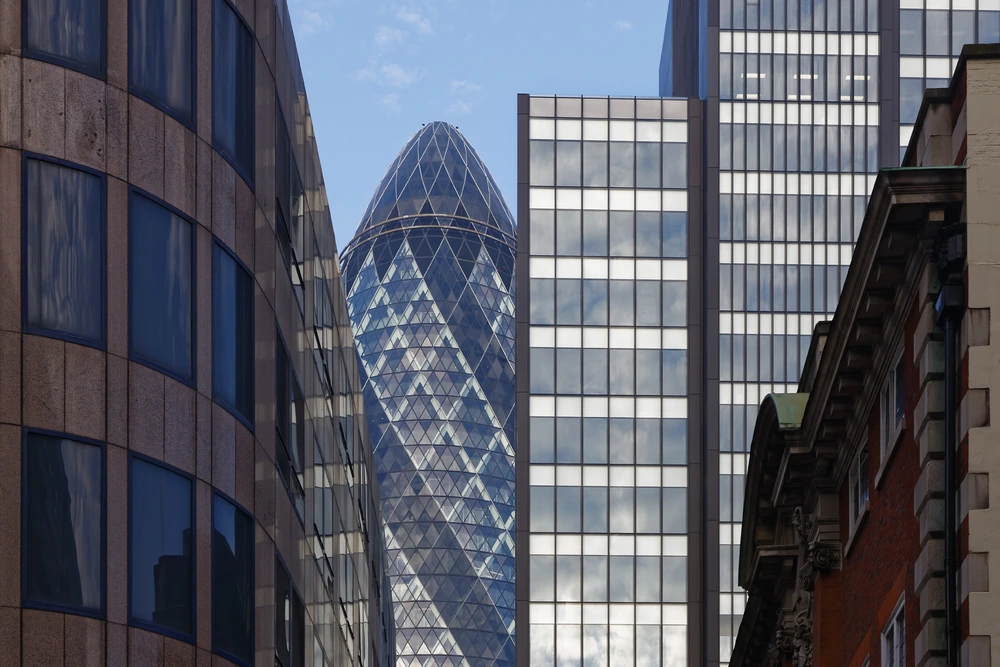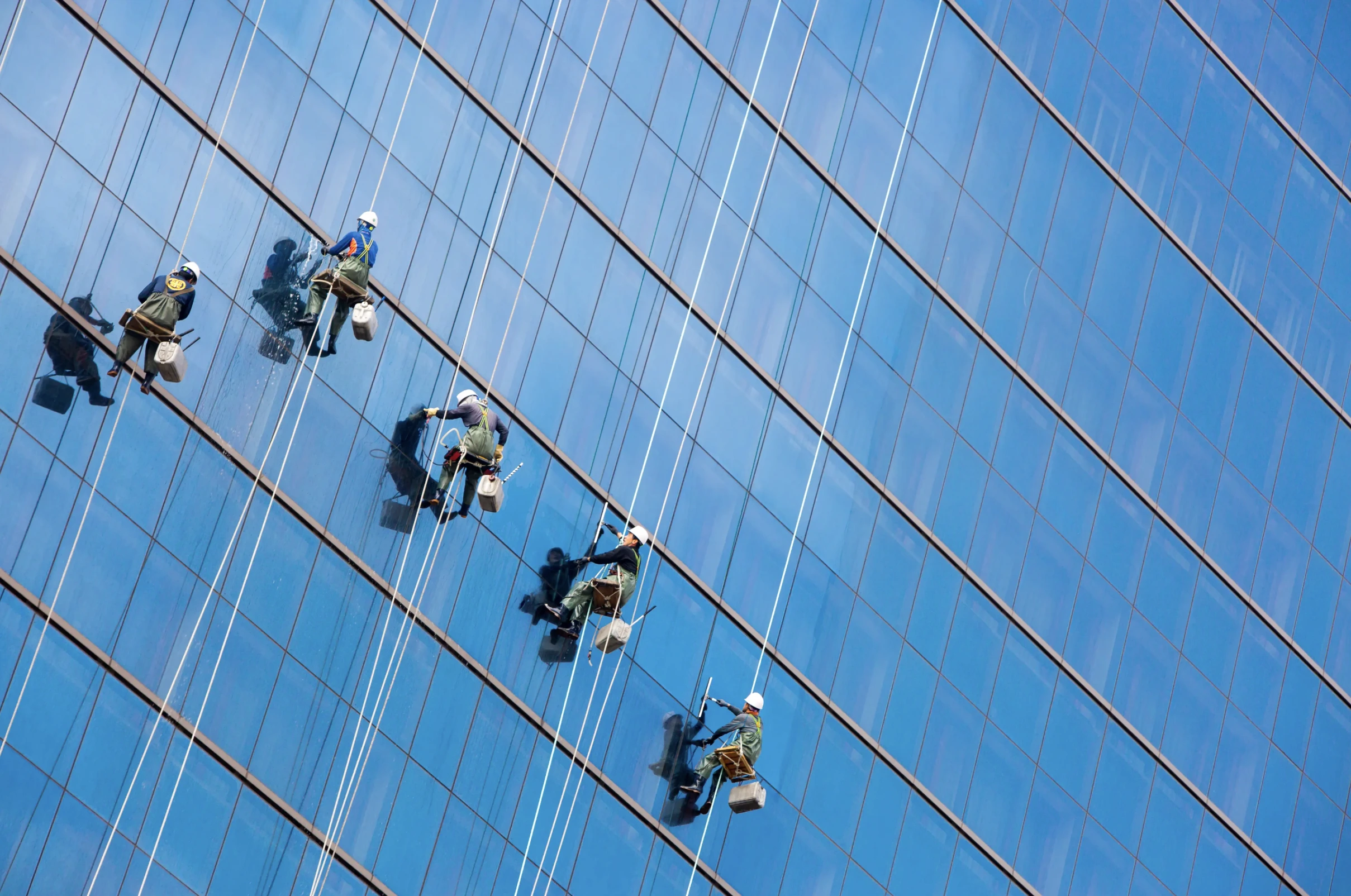
Modern Iconic Buildings in London and Why They Matter
Explore London’s most iconic modern buildings - from The Shard to Lloyd's - and discover what makes these architectural landmarks truly exceptional.
London is often celebrated for its historic architecture - the grand cathedrals, Georgian townhouses, and Victorian railway stations. But increasingly, the city’s identity is defined by its striking modern architecture: buildings designed in the last 20-30 years or so that push technology, aesthetics and function in new directions. These are the towers, offices and mixed-use estates that convey ambition, innovation and brand value.
For property managers, façade & exterior maintenance firms, facilities directors and building owners - understanding what makes a modern building iconic is more than academic. These buildings set the standard for accessibility, materials, cleaning regimes, maintenance cycles and asset value in the premium sector.
In this article we’ll explore the characteristics of modern iconic buildings in London, highlight several prime examples, and draw out what service providers and building owners need to know for maintenance, presentation and longevity.
What Makes a Building “Modernly Iconic” in London
What differentiates a new landmark from “just another tower”? Several key factors stand out:
Distinctive form and silhouette: Many iconic buildings are instantly recognizable from afar because of their shape, tilt or profile.
Advanced materials and façade systems: Use of complex glazing, high-tech cladding, exposed structural elements, or dynamic façades.
Public and cultural engagement: Observation decks, public spaces, or interactive elements that make the building part of the city experience.
Sustainability and performance: Modern landmarks often integrate energy-efficient systems, smart façades, and environmental design.
Brand and place-making value: They become symbols for corporations, cities or districts - attracting tenants, advertisers and attention.
London’s modern architecture story includes a rapid expansion of skyscrapers, towers in the City of London, Canary Wharf, Southbank and more neighbourhoods.
As the City of London website notes: “The City of London is home to some of the world’s most striking modern architecture.”
Let’s look at several exemplary buildings and what they teach about modern premium property.
30 St Mary Axe (“The Gherkin”)

The Gherkin, completed in 2003, is one of London’s earliest modern icons. Designed by Norman Foster and his team at Foster + Partners, it stands 180 m tall and features a distinctive curving glass façade with a diamond pattern of bracing.
Why it is iconic
Its smooth, curved shape contrasted sharply with the boxy office towers of the time. Its ultra-modern aesthetic became synonymous with the City’s future-facing ambition. The façade system - double-skin glazing, diagonal bracing visible from the outside - signals transparency and structural innovation.
The Shard

At 309.6 m, The Shard is the tallest building in the UK. Designed by Italian architect Renzo Piano and opened in 2012, it is a landmark for its sheer scale and its glass-pinnacle design slicing into the London skyline.
Why it is iconic
The Shard’s ambition is both vertical and symbolic. It houses offices, residences, a hotel and public viewing galleries; its multi-use nature reflects a modern trend in commercial property. The façade is entirely glass, giving dramatic reflections, transparency and night-time presence
Lloyd’s Building

Although completed in 1986 (so slightly “older” than some), the Lloyd’s Building in the City remains a milestone of modern architecture: an inside-out services structure designed by Richard Rogers, with exposed lifts and services on the exterior. It exemplifies high-tech architecture.
Why it is iconic
At its time the design was radical: showing services rather than hiding them, celebrating engineering, offering flexible floorplates. It continues to influence how modern buildings are serviced, maintained and upgraded.
Key Lessons for Property Maintenance and Service Providers
Having looked at these examples, what are the take-aways for companies servicing modern iconic buildings?
Material & Façade Systems Matter
Modern iconic buildings often use complex façades: high-performance glazing, double-skin systems, exposed bracing, dynamic shading. This means cleaning and maintenance regimes must be tailored to materials, access constraints, and longevity. Routine cleaning of steel or aluminium elements differs from glazing panels; corrosion, seal failure and access difficulty are elevated risks.
Access Strategy Must Match Building Scale & Form
As discussed in our previous article on high-rise access strategies, modern iconic buildings - especially skyscrapers - require bespoke solutions: rope access, MEWPs, permanent cradles, façade maintenance units. Access planning and scheduling become major cost and risk factors.
Presentation is Part of the Asset Value
When a building is iconic, every detail matters: the façade’s shine, the joints’ precision, the cleanliness of external surfaces and public spaces. For premium estates, service providers must deliver excellence not just in function but in appearance.
Sustainability & Future-Proofing are Expectations
Modern icons lead in sustainability: low-energy systems, monitoring, occupant wellbeing. Maintenance regimes must align: eco-friendly detergents, renewable-powered access equipment, data-driven monitoring of façades. The asset’s brand includes its performance profile.
Coordination Across Trades and Disciplines
In an iconic building, exterior maintenance doesn’t stand alone. Landscaping, lighting, signage, public realm, mechanical servicing - all intersect. For example: lighting effects on glass façades, drainage from paving influencing glass cleanliness, landscaping shading influencing façade exposure. Service providers must operate in a coordinated way, often on tight occupancy schedules.
Attributes of Modern Iconic Buildings and Maintenance Implications
Attribute | Building Feature | Maintenance Implication |
High-performance façade | Double-skin glazing, exposed bracing | Requires specialist cleaning, regular inspection, seal monitoring |
Tall height / prominent skyline presence | >200 m towers, central London sites | Access strategy critical, wind exposure, pedestrian management |
Mixed-use occupancy | Offices + retail + residences + public space | Coordination of access windows, minimal disruption, varied occupancy patterns |
Sustainable design | Monitoring systems, eco-materials, shading | Eco-friendly products, performance monitoring, data reporting |
Public and brand visibility | Observation decks, unique forms, signage | Immaculate presentation, lighting clean-up regimes, real-time responsiveness |
Why London Continues to Produce Modern Iconic Architecture
London’s global role as a financial hub, its scarcity of land, and the redevelopment of old industrial/port areas (such as Canary Wharf, Nine Elms, Southbank) have driven demand for signature buildings.
Local policies, architectural innovation, and the desire for sustainability combine to produce buildings that are not only tall, but smart, efficient, striking and landmark-worthy.
Working on modern iconic buildings means more than “just cleaning” or “just landscaping.” It means being part of an asset that signals innovation, brand and future-readiness. For a property maintenance company - especially one operating in London’s premium sectors - the message is: You must deliver sophisticated excellence.
Your tasks include:
understanding the building’s form, materials and façade systems
scheduling maintenance with minimal disruption
aligning cleaning, access, landscaping, lighting and public realm into one integrated programme
supporting the building’s brand value via pristine presentation and reliable system performance
By aligning your approach with the ethos of modern iconic architecture, you don’t just maintain buildings - you preserve and enhance landmarks.





